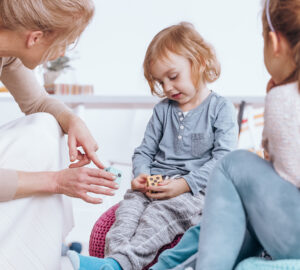Too many adolescents today are being misdiagnosed with anxiety disorders. Mounting pressures have increased their levels of stress, making it harder and harder for parents to discern normal anxiety from a disorder that needs professional help. Let me offer you some things to consider.
In my experience, more common than anxiety disorders are the feelings that arise from everyday challenges, stresses and traumas, such as parental discord, relationship problems, pressure from schoolwork and worry about the future. These emotions build up to the point of overload and overwhelm, eventually needing a place to go. So they leak out as symptoms like trouble sleeping, somatic complaints, crying, snapping at people, being distracted, feeling depressed and lacking motivation.
Some girls sent to me due to anxious feelings have temperament styles that can be misconstrued as anxiety. Kids who are slow to warm up to new people or experiences get labeled as being socially awkward or having social anxiety. Sensitive kids who get overloaded with stimulation from large or loud groups can also get mislabeled with anxiety disorders.
The environments kids find themselves in also contribute to stressful feelings. Kids growing up in homes that feel tense, angry, chaotic or unpredictable might feel anxious as they walk into the front door after school. Girls I counsel who are being bullied or excluded by their friend group feel anxious going to school. And don’t get me started on the fear invoked in children who have to endure school shooting intruder drills.
My old mentor Dr. T. Berry Brazelton described predictable times in our development as touch points; think 3-year-olds pushing for more autonomy or middle schoolers dealing with changing bodies, friendships and the relationship with their parents. Fast forward to the transitions facing high school and college seniors, and then later on to marriage or having a child. Just prior to these transitions, kids and adults tend to feel out of sorts emotionally, experiencing a myriad of feelings such as anxiety, uncertainty, grief, anger, insecurity and sadness. These feelings are normal, and it should be normalized to have a healthy outlet. Otherwise, what is unexpressed becomes unmanageable.
When our kids experience an emotion like anxiety, they need to learn to check in with themselves and figure out what that feeling is telling them. It makes that emotion less overwhelming and easier to manage. I help girls learn ways to channel their feelings so that their emotions don’t build up to the point of overwhelm. It’s also reassuring to understand and accept how your temperament might affect your outlook and behaviors so that it can be turned into a strength versus a deficit. If the aforementioned practices aren’t enough to help your child effectively deal with their anxiety or it worsens to the point of interfering with their life, then it’s time to have them evaluated by a therapist for further treatment.
There are many reasons why kids experience anxiety, and I only mentioned a few in this article. I encourage you to not quickly jump to labels, diagnoses and medications when your child shows signs of anxiety.
Tim Jordan, M.D., is a Behavioral Pediatrician who counsels girls aged grade school thru college. Listen to his weekly podcast, Raising Daughters, to gain information on raising strong, resilient girls. For more info on Dr. Jordan’s retreats, summer camps and books visit drtimjordan.com.








